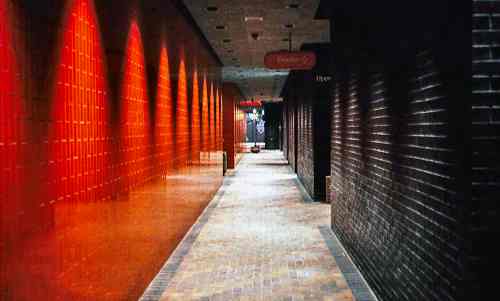It gets dark every night. Using landscape lighting, integrators have the ability to make residential and commercial outdoor spaces visually comfortable at night.
And while landscape lighting has become a recommended entry point for many integrators looking to expand into lighting fixtures, most integrators have not had formal training in landscape lighting design. Indeed, they have been creating unique lighting environments based on instinct.
Now, a collection of 10 educational sessions created by renowned landscape designer and author Janet Lennox Moyer can help dealers better serve their clientele and differentiate themselves from competitors in the field by elevating their work beyond the scope of basic lighting designs.
The purpose of this documentary project, which is supported by Garden Light LED, is to provide lighting designers and integrators with a proven and scientific system to implement and execute for every lighting design project they undertake.

This collection of 10 sessions, available as a set or individually, provides the groundwork necessary for lighting designers to create safe and pleasing night environments.
The specifics and intricacies of landscape lighting differ from other types of lighting. By looking at the science and art of lighting, how humans perceive light, and how we use light to guide people through nighttime landscape spaces, this program will elevate understanding and expand creativity.
This program will open integrators’ eyes to better harness the possibilities light offers. Armed with lighting tools and techniques to create effects that produce useable, sustainable night systems, Moyer shares multitudes of details she has learned over 45 years in the field.
Moyer began her lighting design career in 1976. She began specializing in landscape lighting in the mid-1980s and wrote the essential book used around the world, The Landscape Lighting Book, first released in 1992 and now in its third edition (Wiley, 2013).
Over her career, she has worked on projects large and small, from the Defense Intelligence Agency’s first home in Washington, D.C., to winery caves, entertainment gardens, and botanical gardens.
Moyer has taught lighting design since undergraduate school at UC Berkeley, Rutgers, and the Lighting Research Center, among others. She founded the International Landscape Lighting Institute (ILLI), a 501(c)(3) educational non-profit organization that provides landscape lighting education classes in the U.S. and abroad.
In addition to a book based on her lighting projects called She Paints with Light, she recently wrote a full-color design book, The Art of Landscape Lighting: A Designer’s Companion, which provides inspiration for designers through her learnings over more than 45 years of lighting design.
LED technology has vastly changed how to build lighting designs, but the basic tools have remained the same. And while integrators and landscape designers don’t want to take steps backward, this course will remind them of everything they knew before technology shifted, so they can use this information to learn to produce better night spaces.
The course features 10 lectures and hundreds of hours of content including videos and image galleries. The training curriculum teaches comprehensive lighting design starting with basic techniques to advanced planning processes. It is suitable for both beginners and advanced-level users. At the end of each lesson, there are practical landscape lighting learning outcomes.
Session 1: Composition Elements; Crafting a Cohesive Scene
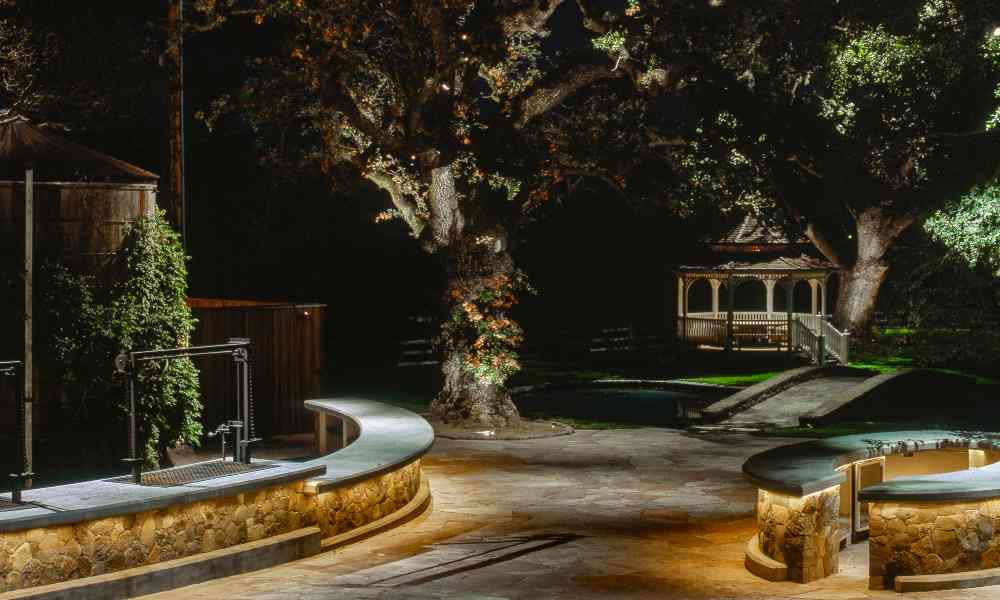
Rather than sticking light fixtures here and there, integrators are provided the opportunity through the design tools of composition to create a beautiful scene through their clients’ windows; to provide clients with a comfortable patio or outdoor room to relax in, and to design public gathering spaces that reveal the beauty of local landscapes.
This session looks at the issues of revealing night spaces and using design tools to create a stable composition.
Learning Objectives:
1. Understand the site and the client
2. Imagine the scene completed
3. Decide what is to be revealed and what should remain hidden in the night darkness
4. Organize the visual elements
5. Use light to direct view
6. Consider formal versus informal composition
Session 2: Creating a Sense of Depth; Depth Adds Perspective
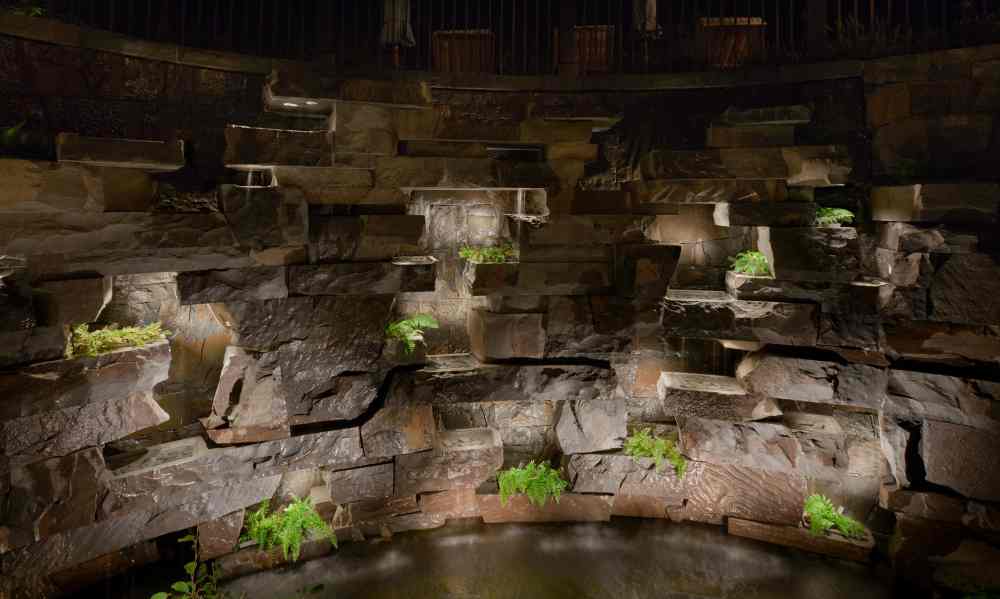
Light has the ability to make a space feel larger or smaller depending on how layers of light are introduced. This session will look at using light level hierarchy to manipulate the appearance and feeling of a space.
Learning Objectives:
1. Varying light level to expand or contract space
2. Lighting the scene’s boundary or background
3. Creating an outdoor room
4. Using brightness variation as a hierarchy to provide visual balance
Session 3: Structures and Buildings; Reveal Structural Characteristics that Support the Scene

Structures—trellises, pavilions, fences/walls, and buildings—represent one or more elements in a landscape that need to be integrated into the overall scene. Lighting can interpret the relationship of masses, planes, and building detail. Integrators can choose to emphasize or redefine the appearance to support the overall visual composition. This session will look at various options and techniques.
Learning Objectives:
1. Using light to state a building’s purpose
2. What makes bad building lighting
3. Lighting around the building for context
4. Using the building as a mounting source
5. Looking at multiple techniques for massive structures
6. Introducing color and/or drama on buildings
7. Lighting techniques to enhance texture
8. Using trees as a mounting source
9. Silhouetting for emphasis
10. Grazing versus washing a surface
Session 4: Lighting Art; Integrating Art into the Visual Scene

Art can serve multiple purposes in landscape lighting. This session will discuss potential roles that art can take and the relation to other elements in the overall visual composition. Techniques for art can vary as much as the art. Moyer will provide guidelines to help integrators plan how to assess and what techniques to consider.
Learning Objectives:
1. Art’s function in a lighting scene
2. Understanding art’s color and reflectance
3. Using darkness for emphasis
4. Using art for visual destination
5. Showing detail for realism
6. Techniques for “sets”
7. Treating multiple versus single sculptures
8. When to use color on art
9. Technique for lighting black or very dark art
10. Position and use of sculpture in lighting scenes
11. Planning for art not in place yet
12. Integrating wall art
13. Remembering composition
Session 5: Lighting Objectives and Expression; Use Lighting Elements to Create a Safe and Pleasing Environment
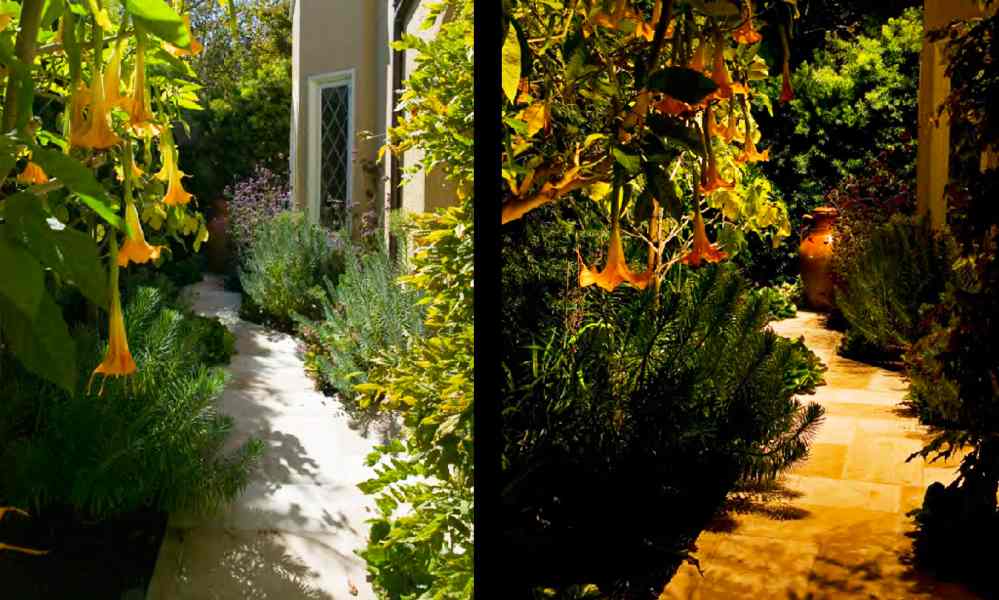
Landscape lighting has three basic objectives—safety, security, and aesthetics. Creating a pleasing environment out of the darkness requires effective expression of visual design. This session will address how to start making decisions and introducing light to create the desired lighting effects.
Learning Objectives:
1. Primary objectives: safety and security through aesthetic treatment
2. How light provides a sense of safety
3. How light addresses security
4. Using an aesthetic approach
5. Providing “view” out a window to complete an interior space
6. Understanding “quality” of lights
7. Soft versus harsh light as a tool
8. Using color to create an environment
9. Understanding how even and uneven balance affects a scene
10. Understanding visual cohesion and how to create it
Session 6: Plant Lighting Guidelines; Learn Plant Characteristics and Form that Affect Lighting Choices
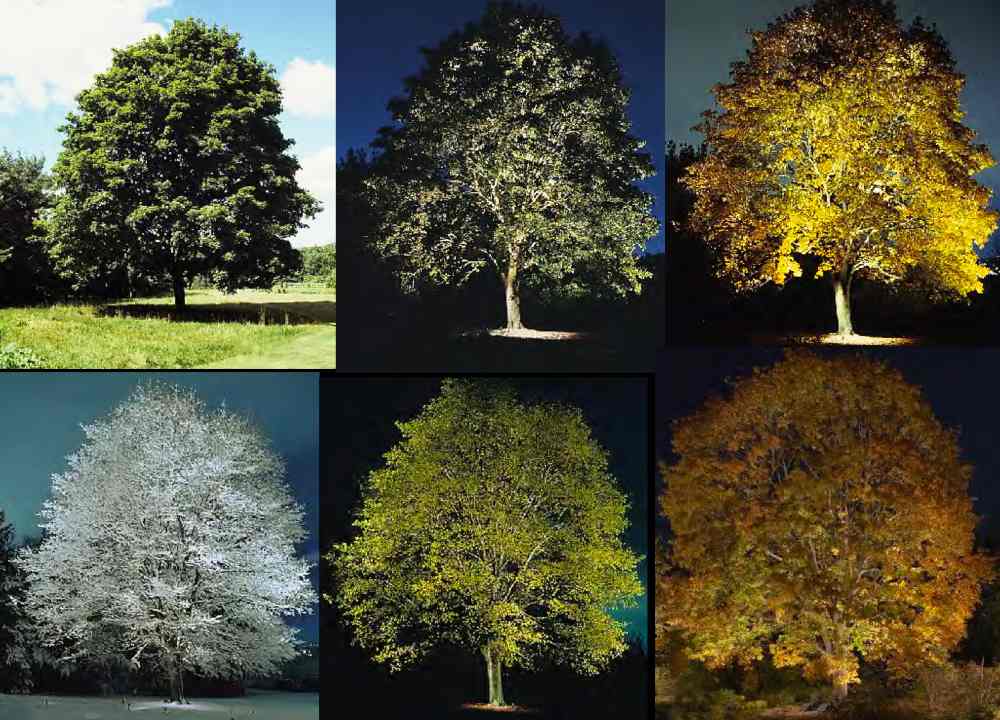
Plants take many shapes and sizes and fill many roles in landscape design and landscape lighting. It is critical to understand plants and how they change over time. This session will discuss plant characteristics and the multitude of ways to light them to express their beauty as part of the scene.
Learning Objectives:
1. Understanding the characteristics of the plants to be lit
2. A plant’s role in the composition
3. Three basic tree-lighting techniques
4. Producing a three-dimensional appearance
5. Understanding fixture location to show plants best
6. The importance of knowing the genus, species, and variety of all project plants
7. Learning how tree shape changes as the tree matures
8. Issues regarding deciduous and evergreen trees
9. The importance of downlighting for plants
10. Understanding what uplighting, downlighting, and the combination does for plants
11. Dense versus open canopies
12. The importance of pruning for plant lighting
13. How time can change a plant’s role
Session 7: View Out Windows and/or Across Garden; Reconnecting People with Outdoor Space

Night lighting creates outdoor spaces and environments for your clients to experience. This session will look at how lighting reconnects us to our gardens at night by providing views through windows. It will also discuss thinking about views from one area in a garden to another and using light level hierarchy to guide people into and through garden spaces.
Learning Objectives:
1. View connects us to our garden after dark
2. Light outside windows makes interior spaces feel larger
3. Anything visible outside a window can be lit, regardless of location
4. View across a garden—from one area to another
5. Understanding the importance of arrival—getting guests to the front door, comfortably
6. Large sites require decisions about importance, as do small sites
7. Providing light guides to help people navigate spaces
Session 8: How Light Stimulates the Human Eye/Brain; Understanding the Science of How the Human Body Interacts with Light

Understanding how humans see helps integrators know how to use light in their visual compositions. This session will look at the configuration of the eye, how the eye and brain interact, and the way to best use light for human comfort and enjoyment.
Learning Objectives:
1. Understanding the makeup of the eye and its interaction with the brain
2. Role of the rods and cones
3. How the eye changes to see varying distance and how that is restricted with age
4. Normal field of view
5. Photopic, mesopic, and scotopic vision light levels
6. How light level affects our color perception
7. Understanding light level variation and patterning in a space
8. Understanding physical obstacles in a night space
9. Using light to guide people through space
10. How glare impacts lit spaces
11. Additive versus subtractive color
12. Understanding color temperature and its interaction with objects
13. How light sources can vary based on their relationship to the blackbody locus
14. Understanding the variety of conditions of daylight
15. Light sensitivity curve for humans and for plants
16. LED light and color production varies greatly from old technology sources
Session 9: Using Shadows; Knowing when to Use Darkness!

Moyer’s lighting partner, Michael Hooker, always said, “Darkness is your friend.” It helps shape and define objects; it can hide unwanted elements; it can help join two areas. This session will explore all that can be done with shadows and darkness in our lighting.
Learning Objectives:
1. Using downlight to create shadowing in a scene
2. Shadows support three-dimensional shaping
3. How patterns affect a lighting scene
4. Using shadow to create interest
5. How seasonal changes in plants affects projected shadow patterns
6. Projecting patterns for a purpose
7. How differentiation in shadow affects uplighting versus downlighting
8. Sculptures and the use of shadow
9. Using light/dark variation across a large tree canopy
10. Creating shadows to emphasize textured bark
11. Shadows can hide things in a lighting scene
12. Using darkness as a tool in a composition
Session 10: Lighting Water Features; Tackling the Most Difficult Lighting
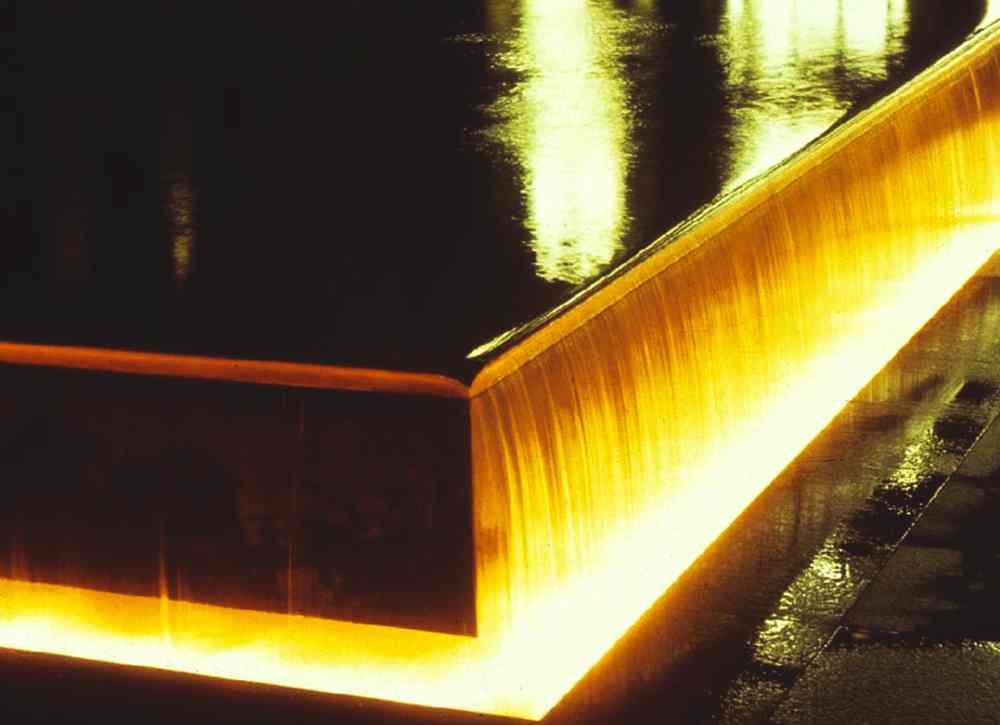
Water and electricity don’t play well together. The NEC has multiple requirements and restrictions based on the type of water body being worked with. This session will look at how to approach water and what to be careful about in the design.
Learning Objectives:
1. Water and electricity don’t mix; lighting water is very difficult
2. Understanding light level contrast between water and surrounds
3. Importance of hiding electrical equipment from view
4. Creating a recessed trough to properly locate and protect lighting equipment
5. Understanding smooth and rough weir needs for lighting
6. Depth of water scatters and diminishes the effect of light
7. Types of underwater fixtures and how/when to use them
8. Importance of complete documents for water features
9. Importance of correct fixture location to actually create a lighting effect for water
10. Difference between up- and downlighting in water lighting
11. Using fiber-optic and LED
12. Importance of details to get the water lighting effect to work
13. Introducing “shore-scraping” and how and when to use it
14. Beauty of reflection on a still water surface
Find out more about this course on the IES website here. Stay tuned for more sessions as Garden Light LED will be launching another 10 sessions in fall 2022.
